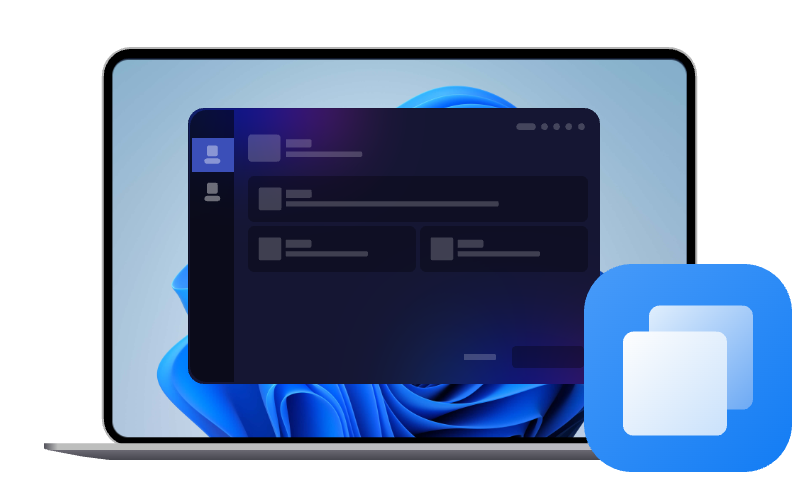GPartedLive - Clone Disk to SSD in Windows 10 or 11 (2025)
You can’t clone disk with GParted unless using the DD command line. This involves command line and complex steps, you must be careful. Or preferably, use a dedicated cloning software for Windows like AOMEI Cloner.
Clone disk to SSD with GParted
I've just acquired a 1 TB NVMe drive and wanted to move everything from my 500 GB SATA SSD. I don't want to create the partitions again, cause I already have Windows and Linux set up with GRUB. Is there any way of just cloning all files and partitions and later changing the size of the partitions to fit the bigger drive?
- Question from Reddit
Can GParted Clone Disks?
GParted itself doesn’t offer a one-click disk clone feature like a dedicated cloning software. Instead, it allows you to manually clone each partition to another drive and set the bootable flag afterward. Note that this operation risks losing hidden or system partitions.
If you insist on using GParted, you can still try to clone the entire disk with the dd command line. It creates an exact sector-by-sector copy, even working for damaged disks, and requires you to learn some necessary knowledge. This operation is risky, especially if you choose the wrong drive or switch the source and destination disks.
How to Clone Disk to SSD with GParted & DD (Terminal Way)
Cloning disk with GParted & DD command line is useful, but it’s sometimes called the "disk destroyer". You may accidentally wipe your data if you enter the wrong command, e.g., swapping if and of, but it can be surprisingly effective if done carefully.
- 👇 What You’ll Need:
- Prepare and connect a new SSD, preferably with larger capacity.
- A USB flash drive (16 GB+).
- Learn the DD command line and necessary parameters.
- GPartedlive ISO file and Rufus (for Windows) to create bootable USB.
- Some patience and extreme attention to detail.
Part 1: Download GParted Live ISO File
Navigate to the official download page. Here are two CPU architecture versions: 1.7.0-1 and higher 64-bit image, or 1.6.0-10 and lower 32-bit image. Select the version that best suits your situation.
Part 2: Create a Bootable USB using Rufus
Step1. Connect the prepared USB drive to your Windows PC. Then, open the .exe file of Rufus and select your USB drive in the Device section.
Step 2. In the Boot selection, click Select to browse for the location where the GParted Live ISO file is saved and select it.
Step 3. At last, click START to format and create a Gparted LiveUSB drive.
Part 3: Boot and Clone Disk with GParted Live
Step 1. Restart your computer to BIOS, set priority for the GParted Live USB drive, and boot from it. After loading, press Enter to keep using the default boot menu, which works for most situations.
Step 2. It will open the Terminal window automatically. If not, press Ctrl + Alt + T to launch it. Type lsblk and press Enter to list all available disks.
Step 3. Please double-check the device name and make sure you select the right source and destination disks. You can type sudo smartctl -i /dev/sda (/dev/sdb) and press Enter to get details. For example:
- /dev/sda = your old source disk
- /dev/sdb = your new destination disk
Step 4. Type the DD command line to clone disk. Press Enter and wait patiently.
sudo dd if=/dev/sda of=/dev/sdb bs=64K conv=noerror,sync status=progress
- The DD command line parameters:✎...
- if= (input file) = source disk
- of= (output file) = destination disk
- bs=64K = block size (It speeds up copying)
- conv=noerror,sync = continue even if errors occur, pad blocks if needed
- status=progress = shows live copying progress
- Disconnect extra drives to prevent accidental data overwriting.
- Repair or reinstall the bootloader if cloning a system disk.
- Target drive needs to be the same size or larger; cloning to smaller disks will fail unless you shrink the disk size beforehand.
Use Dedicated Cloning Software to Clone Disk (3 Steps)
If all this sounds too complicated, don't worry, there are simpler ways! AOMEI Cloner is a reliable and dedicated disk cloning software that can clone hard drive or SSD in Windows 7, 8, 10, 11, and Windows Server.
It will include the operating system, system files, etc., required to start Windows and make the cloned drive bootable. So you can directly boot from it without manually repairing the bootloader. In addition, you can choose to clone hard drive within Windows or reboot to the WinPE recovery environment.

- 👑One-click disk clone -automatically clone the entire disk (HDDs/SSDs or MBR/GPT) without boot issues.
- Intelligent clone only used sectors of a drive, making it easier to clone large HDD to smaller SSD without capacity issues.
- 4K align SSD to optimize performance and longevity significantly.
- Resize partitions on the target disk, especially those with different disk partition styles(one MBR, one GPT). It can be automatic.
- Reboot to WinPE recovery environment for cloning, especially useful in the event of system crashes or failing drives.
- Support all brands of hard drives and SSDs, such as Samsung, WD, Crucial, SanDisk, etc., and common disk interface (e.g., SATA, M.2, NVME, or PCIe).
Step 1: Open AOMEI Cloner after installing. Then, click Clone and Disk Clone subsequently.
Step 2: You will be asked to select the source disk and destination disk (all data will be overwritten). Click Next after making your selections.
Step 3: Optionally, to ensure you get the best results, check SSD Alignment to boost SSD disk performance and improve its longevity. Try Edit Partitions to adjust the partition size manually or automatically if your target disk is larger, or they have different partition styles (MBR/GPT). Then, click Start Clone to get started.
By default, this software uses the Intelligent clone mode, which clones only the used sectors of a drive. It will not include the empty sectors and bad sectors.
Big Comparison: GParted vs DD vs AOMEI Cloner
|
Feature |
GParted & DD |
AOMEI Cloner |
|
Ease of Use |
Hard (WinPE and command-line) |
Very asy (GUI) |
|
Speed |
Slower for big drives |
Fast (only the used sectors) |
|
Full Disk Cloning |
Yes (but risky) |
One-clickdisk cloning |
|
Bootloader Handling |
Manual(usually after cloning ) |
Automatic |
|
Resize Partitionsduring Clone |
No(only after cloning) |
Yes |
|
4k alignment |
No |
Yes |
|
Smaller Drive |
Partially (human intervention required) |
Intelligent |
|
👑Ideal For |
Expert |
All users, especially novices |
Conclusion
You can’t clone disk with GParted as it does not provide such a tool. As a workaround, you can choose to combine GParted and DD command line or directly use a dedicated cloning software like AOMEI Cloner.
By comparison, using cloning software will be a better choice as it allows you to clone an entire disk and handle cloning issues well with minimal human intervention.
FAQs About Clone Disk GParted
Q1: Is cloning disk with GParted safe?
Yes, but only if you carefully copy all partitions and flags.
Q2: Can I clone Windows 10 with GParted?
Technically, yes, but boot issues may occur. Better to use dedicated cloning software for Windows like AOMEI Cloner.
Q3: Does GParted copy hidden recovery partitions?
Only if you manually select and copy them and it's easy to forget.
Q4: Is dd cloning better than GParted cloning?
It depends. DD is more powerful but far riskier if you're not super careful.
Q5: Why is AOMEI Cloner better for beginners?
It has a simple and intuitive GUI interface and can clone hard drive to smaller SSD in 3 steps with extra effort. It will handle the cloning process, partition resizing, bootloader fixing, etc. You just need to check the desired options before cloning.

